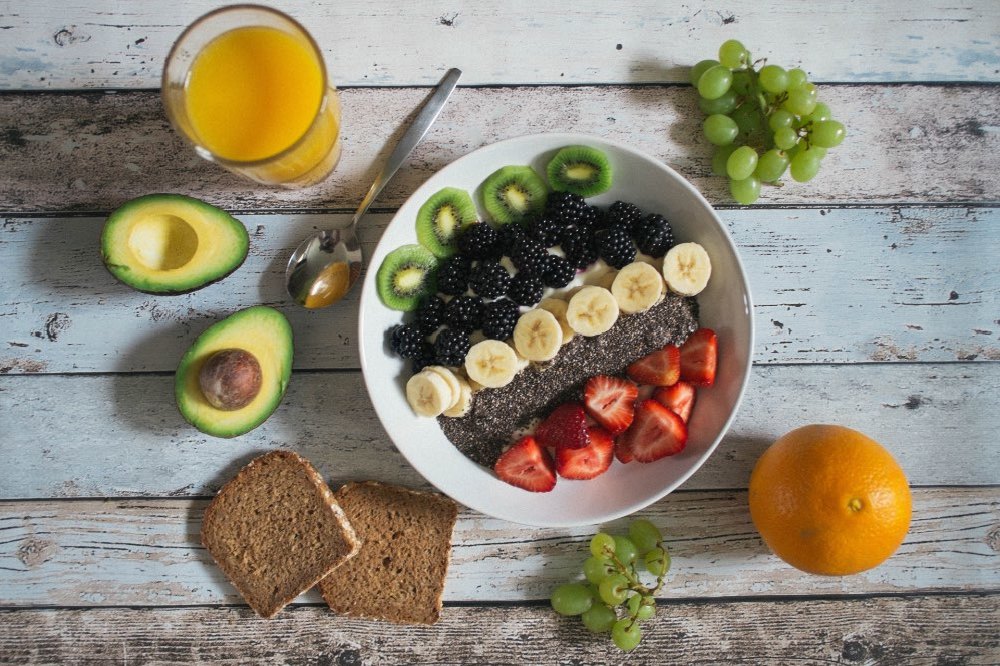It happens every single year. Thousands of people, after a month of festivities involving copious amounts of alcohol, chocolate, turkey, cheese and various other trappings of Christmas, decide that their New Year’s Resolution will be to get back in shape with a complicated gym regime and start eating only salad everyday.

Image credit: Unsplash
We’re here to tell you that that’s just about the worst idea you can have.
It is a good idea to eat healthy foods and eschew junk food after Christmas has left us a little sluggish, but if you’re planning on starting a strict diet, you are just dooming yourself to failure.
Research shows that between 80 and 90% of health kicks have failed by February 1st, and the pressure can actually cause people to put on MORE weight than their Christmas binge.
Over-restriction of food intake, unappetising meal plans and unsustainable work-out plans are real challenges to anyone’s willpower, and eventually leads to the “Oh, sod it” response, whereby the dieter completely ditches their healthy lifestyle ideals and eats a whole packet of biscuits in half an hour. For a week.
If you are your standard chocolate-munching, takeaway-guzzling couch potato who needs a total lifestyle overhaul, you are sooo not alone. But the best way to do it is to take it week by week. Even if you feel ready for a challenge, your body might not.
Here’s our plan for adopting a healthy lifestyle that you’ll easily be able to sustain:
Week 1: The Food Diary
The first thing to do is analyse those eating habits. Keep a food diary for a week without changing any of your dietary habits. Don’t try to consciously eat healthier and equally don’t use it as an excuse for one last binge.

Make sure you record EVERYTHING. That one choccy offered to you from the office Celebrations tin, that half slice of toast your kid left before school in the morning, and ALL the ingredients from your mum’s hearty lasagne.
Week 2: The Cutbacks
You’ll probably notice quite a bit of snacking between meals that you weren’t even consciously aware of. At this point you need to think about turning away those extra snacks and allowing yourself just 2-3 snacks a day depending on how active you are.
Also take note of portion sizes. Avoid the temptation of going for seconds, and be more mindful of how much you’re serving yourself. If you think it looks like a lot, whether it’s your usual portion size or not, it’s time to take away the excess.
If you’re not sure what constitutes a reasonable serving size, get yourself a special portion control plate to aid your dishing out. Sometimes that means binning a good chunk of food which might feel like sacrilege, but until you can learn to make less/save leftovers, it’s the best way to avoid temptation.
Week 3: The Swaps
Start thinking about swapping those unhealthy snacks for fruit, nuts, yoghurts and other low calorie options. Crisps are nice but the salt only makes them moreish, and the buzz from a bar of chocolate goes almost as quick as it comes. You want snacks that will leave you feeling satisfied, fuller for longer and release energy slowly.
Also look at your meals. Where can you make simple swaps without taking away the things you enjoy? If you enjoy a sandwich for lunch, opt for wholegrain bread instead of white - and the same goes for pasta and rice. There’s no need to go completely carb-free. Go for a low-fat spread instead of butter, make you morning coffee with skimmed milk and sweetener instead of sugar, and avoid those unfair calories in cooking oil by using a low-calorie cooking spray instead.
Speaking of cooking, preparing your own food is really the best way to maintain a healthy diet. Who says you can’t have pizza once in a while? Make it yourself and you’ll find yourself halving the calories of your favourite takeaway slice. Balance up your portions by including a healthy measure of steamed or roasted vegetables with your meal, or else make a generous side salad (but go easy on the dressing), just so you’re filling up on the good stuff.
Week 4: Get active
When it comes to exercise, if you’re not used to it, the last thing you want to do is waste money on a gym membership or attempt a half marathon. Nobody’s body is equipped to deal with the shock of such huge amounts of movement so suddenly, and it will very quickly become too much of a chore to sustain.

Instead, try something easy like fitting in a daily walk or a brief yoga session. Depending on your fitness levels, slowly increase to a 15 minute HIIT work-out (YouTube is an endless source of work-out videos to follow along to) a few times a week, or you could even try Couch to 5K. Once you’ve got into the habit of moving your body everyday and it doesn’t feel like too much of a challenge, you can think about getting yourself a gym membership if that’s what you want.
MORE: Top tips for boosting children’s health and wellbeing
Soon, exercise will become a habit that you barely have to think about, and eating healthy home-cooked meals will be the default. Remember, it’s not about dieting, it’s about a total lifestyle overhaul that will allow you to maintain or lose the weight you want and stay fit.
Tagged in Health exercise Healthy eating fitness tips Healthy Food

